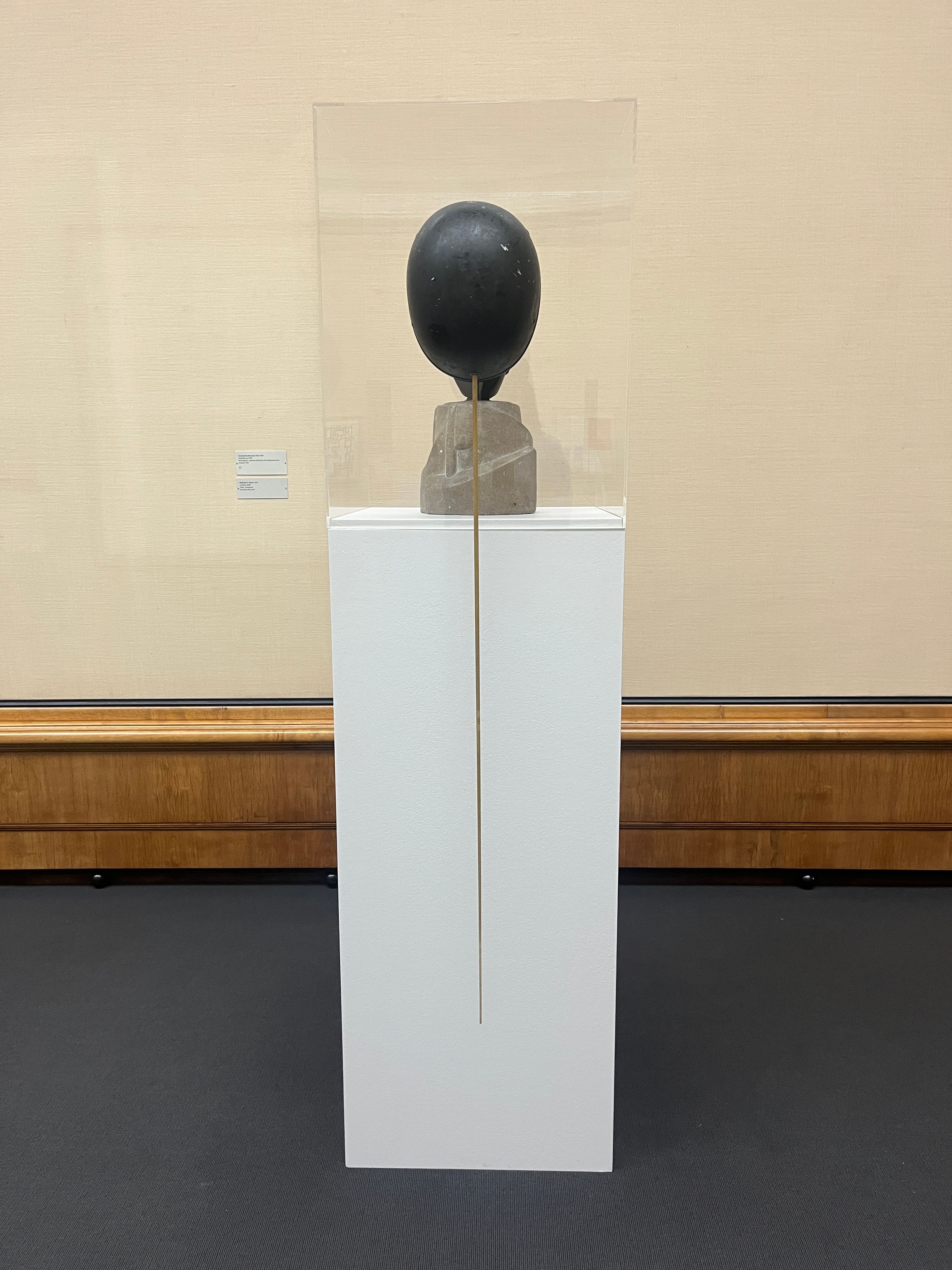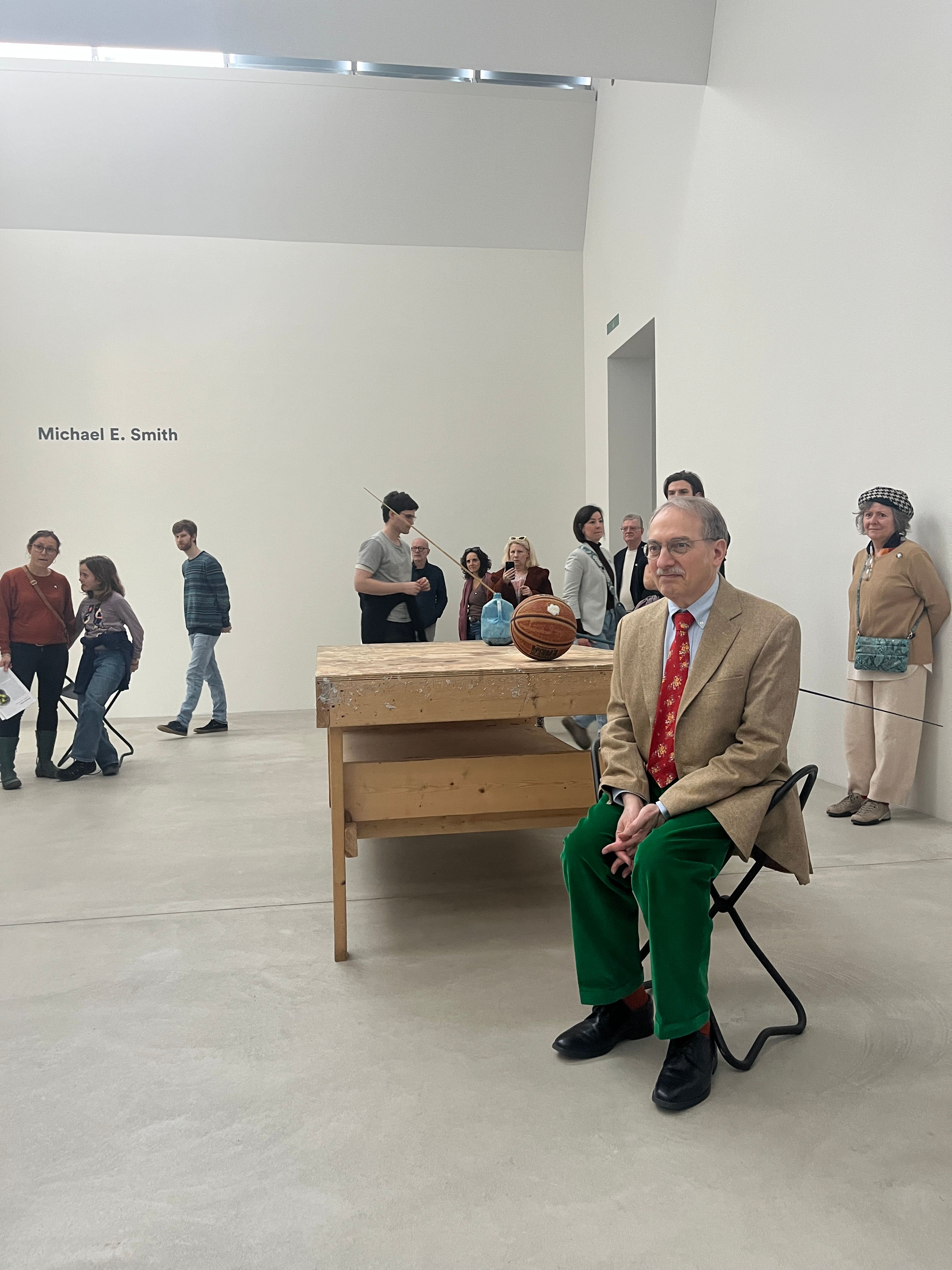Music Is The Thing Itself
Mariana Murcia
I was thinking that hearing an artist talk about their own work is to a certain extent like holding in our bare hands their memory.

Michael E. Smith opened his latest show at the Kunst Museum Winterthur, followed in the next days by an artist talk throughout the exhibition rooms, a great format to address the work, almost scholarly in the uncomfortable sense of scrutiny but also in the most generous way of sharing thoughts in an open conversation with the audience, which in this case is as intrigued as the artist seems to be.
Early in the talk, in front of the first installation we find in the middle of one of the rooms of the collection, the artist already makes clear that talking about his work entails a similar process as to make it. He talks about improvisation and presence as two essential conditions to find in the objects he works with, that which he still does not know what it is. I might come back to this thought later. This first piece, ‘iconic’ as a friend would call it, is composed of two file cabinets with no drawers, the black one on top of the beige one. On top of the black one, two basketballs, on top of the basketballs a lenticular plate like a rigid blanket covering the balls, making them disappear as objects and turning them into flat but round apparitions, symbols of the objects they are. A mysterious arrangement of minimal gestures, a precious bundle of things that comes together as a composition from a forgotten song. Someone suggests a connection, a wink to Donald Judd’s arrangements, to his reversed plinths, and although the comment doesn’t add anything to the conversation, it makes me think about this issue with memory.
What would it mean to possess someone else's memory? even for a short moment, or a whole lifetime. Is it possible for other memories to find refuge in our own? I go back to the comments that reference the work of another artist in the light of a specific work, and I think about Judd’s memory residing in Smith’s body, about the disruption and estrangement. I don’t think it would enable Smith’s skills in this way or another, but it would manifest, sometimes, as a thick presence during his fishing hours at the studio. All of the sudden he would find himself whistling a melody that he never heard before, his attention shifts for a moment, and the next thing is in front of him, there, he finds something with no reasonable explanation, but it is there, present, like a fish out of the water.

The next piece in our walkthrough is also introduced in a collection room, it touches the limit of a Brancusi’s head, it creates an unresolved situation erasing any kind of hierarchies between the two pieces. At this point, another problem enters our conversation, and that is the one about narrative. We are looking at an assemblage of found objects, and yes, every object has a material history and maybe an anecdote attached to it, but still the artist manages to strip away these attributes to almost forget the language of his own parents. The exercise of editing is taken to its last consequences, and his attention is devoted to honor what we are, in presence, in uncomfortable silence, in the failure of explanation. It starts with a thrill to become a quite dark thing, to leave an opening for a glare of hope when the artist mentions his obsession with pairs, because the most fertile situations are given by a one-on-one. And so, we are willing to compromise in exchange for nothing.
We go downstairs to reach the introduction room for the rest of his solo show. In front of a floor-to-ceiling window we see a worn out orange metallic toolbox, it is big enough to support the weight of someone sitting on it. The surface facing the window is tagged with a graffiti that reads – WILL SUCKS –. Here, Michael’s memory runs ahead of himself and spills in the room. We learn where he found this box, that his nephew’s name is William, and that his daughter made a joke about the title of the show (FREE), asking why free-will-sucks. A tiny part of the mystery unveils, the box is maybe the only object in the show that manifests a translation of something, tells a mute story while surrounded by quite loud paintings. A transition into the next six rooms is crafted.
What comes next is a series of spaces where the changing daylight is almost imperceptibly brought to the center. Is like every pair of objects and sounds in each room are showing up to be in the presence of each day passing by. Going through these rooms we can listen to the tailor-made soundtrack, the composition of objects as the things themselves, what we are listening is what it is, with no distance only immediacy.

* You can visit Michael E. Smith exhibition until the 28th of April at the Kunst Museum in Winterthur.